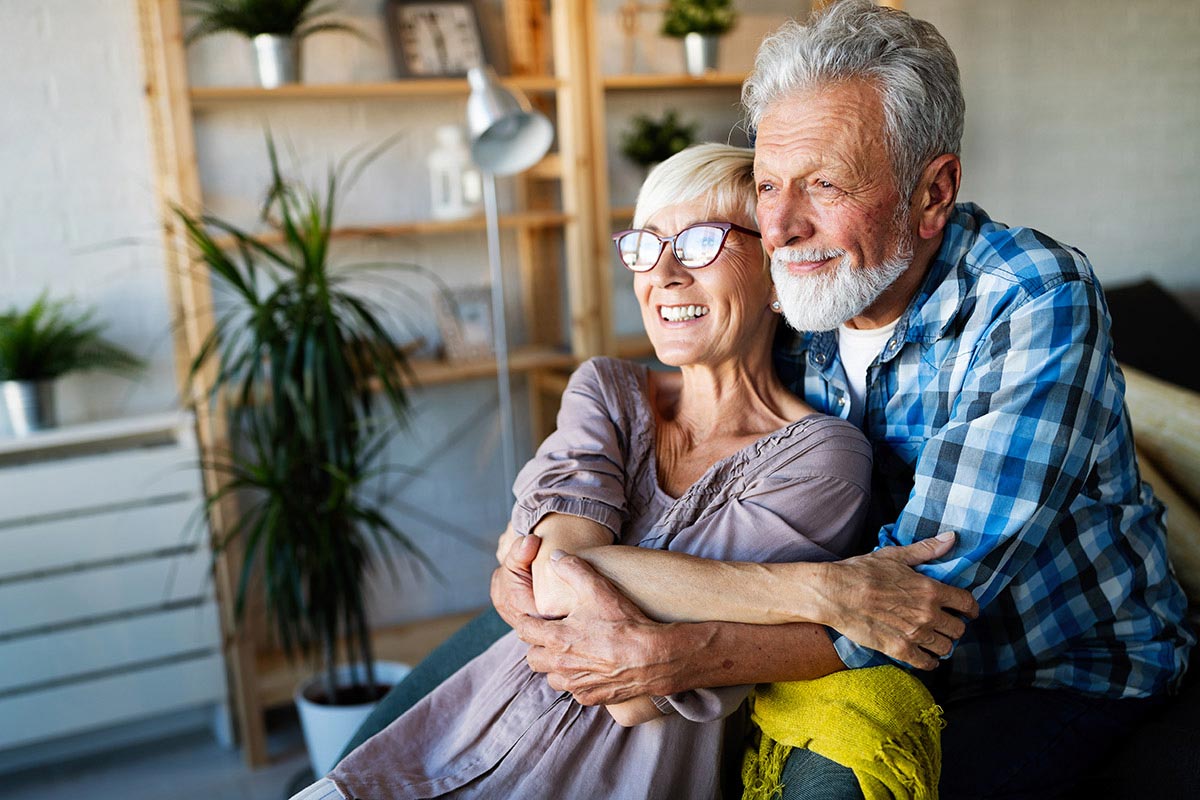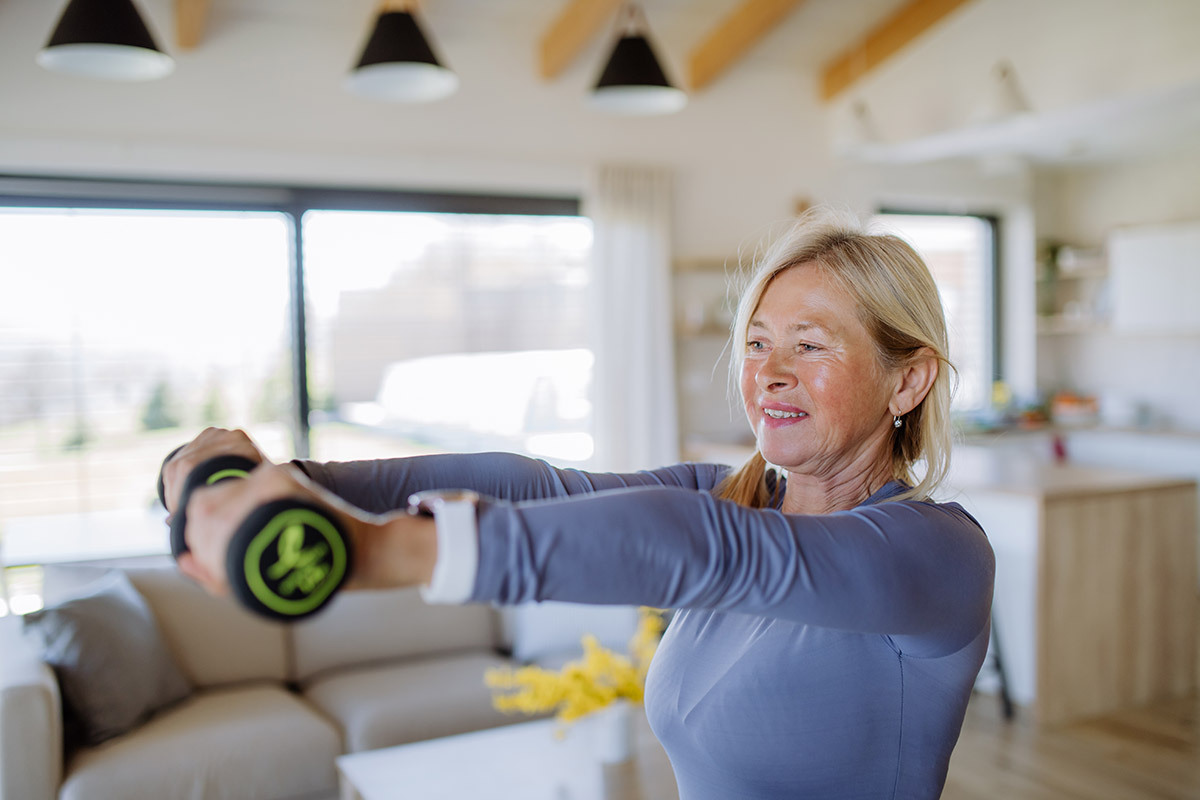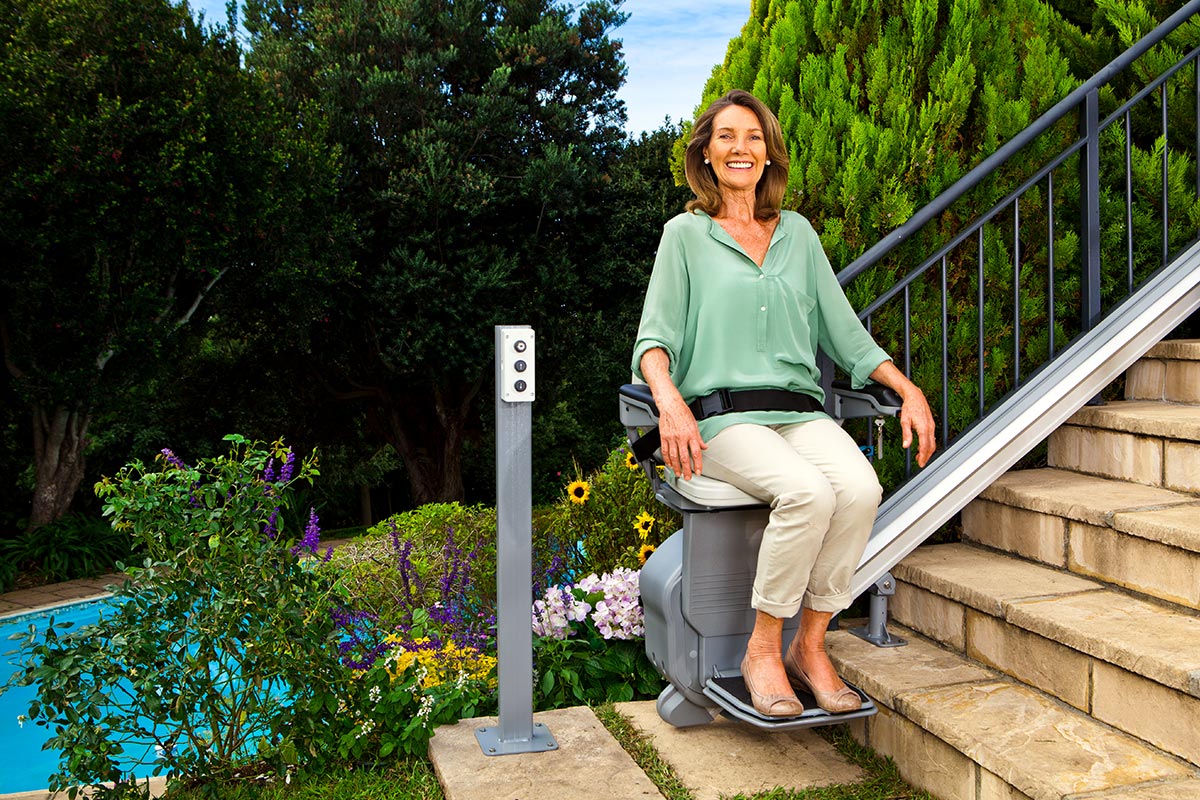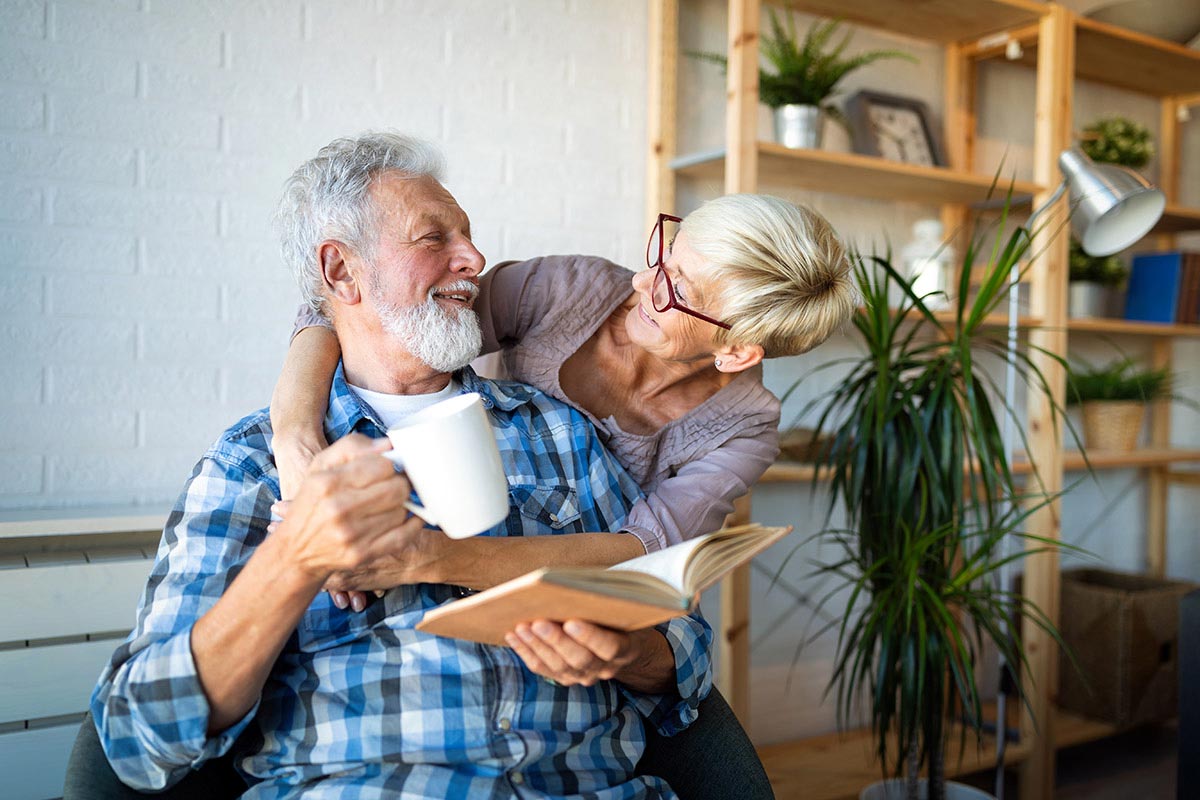Live your best life: How to make your home safe and accessible
Written by Stannah

When people start thinking about improving their overall wellbeing, there is something that they often overlook but that we, at Stannah, know all about. Wondering what that is? We won’t keep you guessing – it’s making your home safer and more accessible.
Yes, that’s right! Your home should be a place of comfort, relaxation, and security, but it can be challenging to achieve that if your home is not designed to meet your unique needs.
We believe that everyone should have the opportunity to live their best life, regardless of their mobility issues. That’s why we’re going to share some tips and tricks on how to make your home safer and more accessible, so you can enjoy all the comforts of home without any limitations.
Whether you’re living with a disability or just want to create a more accommodating environment for yourself or loved ones, there are many small changes you can make that can have a big impact. From installing grab bars in the bathroom to rearranging furniture to make more space, we’ve got you covered.
So, sit back, relax, and get ready to transform the home you love into a safe and accessible space that will improve your quality of life and help you to live your best life.
How making your home more accessible can help you stay active as you get older
The concept of ‘living your best life at home’ means continuing to enjoy living in our own home in a safe and independent way during your golden years. It also means making your home more accessible, so you can move easily between floors and go outside whenever you want.
This idea comes in sharp contrast to what was customary during the 20th century, when people moved to nursing homes while still capable of enjoying a good life at home if only they had access to the right tools to make their homes more accessible and safer.
An accessible home can also make it easier to invite friends and family over, creating opportunities for having a good time and building long-lasting connections.
Let’s take a look at some of the things that you can do around the house and even apply to your routine to make your home safer and more accessible.
Fall prevention: learn what it is and how to leverage it
Fall prevention is all about identifying and addressing the risk factors that contribute to falls. It may sound a bit dramatic, but it really isn’t. It’s just taking steps to prevent falls, so you can maintain your independence, reduce the risk of injury, and improve your quality of life.
According to WHO, people over 60 tend to fall the most. But by removing barriers such as rugs or thresholds, among other solutions, you can prevent tripping hazards and improve your safety at home. Some of the other things you can do to prevent falls at home include:
Using appropriate footwear to walk around the house
Nowadays, you can find beautiful, stylish footwear that not only looks good but helps you move around your home safely and with confidence.
Look for shoes with good traction and support to provide stability and reduce the risk of slipping or tripping. Also, avoid walking barefoot or in socks, as they can increase the risk of falls on smooth or slippery floors.
You should also stay clear of shoes with loose or worn-out soles, as they can affect your balance. Instead, opt for shoes with non-slip soles and a snug fit that can provide proper support for your feet and ankles.
Work on improving your balance

The help of a physiotherapist can do wonders to improve your muscle strength, and thus, your balance, significantly reducing the risk of falling.
A physiotherapist can develop a personalised exercise programme to improve strength, flexibility, and coordination. These exercises can even target specific areas of your body, such as the legs and core, to improve stability while walking, standing, and performing daily activities.
Fall prevention courses can also be a great way to learn more about how to make your home safer and who knows, you might even end up meeting new people and sharing different ideas on how to live safer and happier in your home for longer.
Assessment of medication use
Always consult a healthcare provider to identify potential side effects that may affect mobility and balance. In some cases, you may need to adjust your dosage or timing of the medication and you’re good to go.
It’s also important to follow medication instructions carefully and avoid mixing different medications without medical supervision. By taking a proactive approach to medication use, you can minimise the risk of falls and improve your overall safety at home.
Preventing falls on stairs
Stairs are one of the most frequent architectural barriers we can find around us, and you have them everywhere. So avoiding it is not really the best way to go about things and ensuring you maintain an active life.
Nowadays, there are a number of ways to keep living happily and independently at home without having to avoid the stairs or even moving house. Some of the things you can do to make the stairs easier to navigate include:
- Handrails: Make sure there are places to hold on to at different points along the stairs, on both sides. Additional support at the top of the stairs where the ends of the handrail can also offer great support.
- No loose carpets: This one is true for stairs as it is virtually anywhere in the house. A Loose carpet is one of the most common ways to trip and fall. So make sure your carpet is secured to the steps or remove the carpet completely and replace it with a non-slip mat.
- Good lighting: Choose bulbs that emit a cosy, but strong light that really illuminates the entire staircase.
- Mobility solutions: Installing a stairlift, platform lift, or home lift will make your staircase fall-proof. It’s a very smart solution to consider if you’re thinking of enjoying your golden years in the home you love with freedom and independence. Many of our customers who have a stairlift installed have told us repeatedly that they would have installed one earlier if they just knew how comfortable and easy to use it is. Once you have a stairlift installed, you’ll never know how you lived without one in the first place.
Preventing falls in the living room and bedroom
Little things we never think about can often cause us to trip. Fortunately, there is a lot you can do about it!
For example, you can create more open and spacious areas for better mobility and navigation. This can be especially helpful for people with mobility issues or those who use mobility aids such as wheelchairs or walkers.
By making these small but meaningful changes, you can create a more welcoming and accommodating space for yourself and your loved ones.
Preventing falls in the kitchen
General fall prevention measures also apply in the kitchen, such as good lighting, and no loose rugs, ever.
The objects that you use frequently, like your favourite mug, should be placed in easily accessible cupboards to avoid having to climb on chairs or bend over too much.
Preventing falls in the garden

The best thing about staying active and living in your own home is that you get to come and go whenever you want. And what better way to spend your time than to go outside and enjoy the fresh air?
Being busy in the garden or going to the coffee shop around the coroner to spend the afternoon with friends are wonderful ways to keep moving, but as long as it is done safely.
The entryway to the house or the garden are usually where the problems start. But there are a few things you can do to make your entryway fall-proof. Take a look at the main points below:
- Installing an outdoor stairlift: With a stairlift, the outdoor stairs are not a problem, you can go outside every time you want. And even if it’s raining, our Outdoor stairlift for example is waterproof, and thanks to its protective cover is always ready to go.
- Tidy up gardening items: set aside a place where you can easily store and organise all your gardening tools, so that they are easy to access. For example, in a box that is at waist height, so that you don’t have to stretch, climb on a chair, or bend down too low. Also, don’t leave these objects lying around the garden, as you could easily trip over them.
- Safe paths and steps, with good lighting: It’s important that your house entryway is well lit, especially for rainy days when it’s hard to make out the steps.
Fire-safety rules at home
Making sure your house is fire-safe is probably one of the most important things you can do to improve the safety of your home. Especially for independent seniors living alone, your living environment should be as safe from fire as possible.
Here are things to take into account when ensuring your home is fire-safe:
Electrical safety rules
- With older televisions, you should switch them off completely before going to sleep (or during longer periods of absence) and not leave them on standby.
- Always keep electrical appliances free of dust. Because these devices get hot, it’s important that they can cool down sufficiently, which requires ventilation. But if they’re covered in dust, the ventilation system is not going to work properly. For example, make sure that there is no dust on microwave ovens, computers, printers, hair dryers, etc.
- Don’t connect large power consumer equipment to power strips, but directly to the socket. It’s also important not to connect power strips to power strips, because overloading and short circuiting can happen more easily.
- Electric blankets must also be used according to the instructions. Ensure that the blanket’s wiring does not wear out by keeping the blanket loosely rolled up.
Safety rules when cooking
- Use a kitchen timer to prevent a pan from being on the stove for too long or forgetting that there is still something in the oven. A kitchen timer is also extremely helpful in preventing someone from falling asleep while waiting for a dish to be ready.
- Stay close to the stove while cooking so you can keep a close eye on everything. Be careful not to stand too close to the fire and watch out for loose clothing, potholders or hand/dishcloths that could catch on fire.
- Water should never be used when there’s flame in the pan! With an outstretched arm you can slide a suitable lid over the pan or place a fire blanket on top of it. Also, turn off the stove and extractor hood.
General fire safety rules
- Never smoke in bed. Smoking is still one of the most common causes of fire. Even if you fall asleep on the couch with a lit cigarette, this is life-threatening. Make sure you use an ashtray so that your cigarette falls into and automatically extinguishes in this way. Never empty an ashtray that still contains smouldering ash.
- Use at least one smoke detector per floor. The best place is in a corridor that most rooms open onto. Check whether you can actually hear the smoke detector everywhere.
- If you have a fireplace, it’s important to have the chimney cleaned every year. That way no fire can start in the chimney flue. We can also recognize a chimney fire by a roaring sound in the chimney. If that happens, extinguish the fire with sand. Never use water!
- Candles should be placed on a fixed holder, far from flammable material such as curtains, tablecloth, cushions, etc. Holders made of wood or plastic are not the best choices, even though some are really pretty.
- Make sure you have enough ventilation in your home by opening up a few windows now and then.
- Make sure you can easily escape through an obstacle-free corridor in the event of a fire and call the fire brigade as soon as possible.
- Have a charged phone on you at all times so you can always call for help if needed.
Preventing falls in the bathroom
Did you know that most of the fall-related accidents at home happen in the bathroom? Not that surprising, right? Just imagine it: water, smooth tiles, and soap products. All combined and you have the perfect recipe for a fall. Unless, you’re smart about it and you take the necessary precautions to avoid it.
But it doesn’t have to be an issue at all if you follow some simple strategies to make your bathroom a safer place:
- Consider replacing the bathtub with a walk-in shower, since it’s easier for people with mobility issues to get in and out without any help
- Install grab bars near the toilet and in the shower or bathtub
- Use an anti-slip mat and remove any loose rugs
- Ensure the bathroom is well-lit
- Keep the bathroom free of clutter and any tripping hazards
Ageing in place: Helpful services to help you live independently at home for longer

Nowadays, there are many services that you can use that are extremely useful for living independently at home for longer. And it’s because these services are available that so many people get to live longer at home, especially people with severe mobility issues.
Fortunately, there are many organisations that offer this kind of services, both on a voluntary basis or as a paid service.
Home Care
Among other benefits, home care makes it possible to live independently at home for longer. You receive professional care that is tailored to your needs, and which may include:
- Nursing procedures
- Help with taking medication
- Help with personal hygiene
- Household cleaning
A combination of home care and informal care (that is, assistance provided by a family member or close friend) is what we see most these days. And research shows that people prefer to continue living in their own home. So with the right help, that’s the best way to enjoy living at home for years to come.
Safe and accessible home: a way to a more fulfilling life
When it’s time to start making changes in your home, always think of ways to improve its accessibility and safety conditions, so you can maintain an active life for many years to come. That way you’re preparing your home for the future.
And remember, no matter your age or mobility issues, it’s never too late to start making your home more accessible. With the right mindset, tools, and strategies, you can create a living space that truly meets your needs and helps you live your best life. Ultimately, making your home safer and more accessible can empower you to live a more fulfilling and autonomous life.
Sources:
World Health Organisation Falls
Choosing between staying at home or moving



